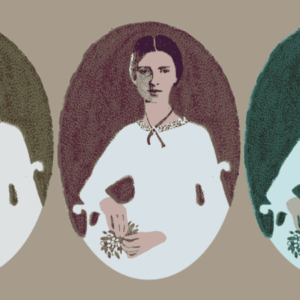
Mexicans Take London, Margaritas Are Consumed
Three generations of Mexican Writers at the London Book Fair
The British Library is known more for housing the world’s knowledge than for its margaritas. That all changed two weeks ago, at an event welcoming a contingent of Mexican authors to London Book Fair. As one senior librarian remarked to me at the bar, with a smile: “It’s a historic first.”
Another first of the week came during a speech by the British Library’s chief librarian, who was telling us that beneath the feet of the guests were floor after floor of subterranean stacks, holding books on every conceivable subject, and began listing an array of august academic topics when someone from the audience called out: “The Beatles!” We had our first heckler of the week, and we were only half an hour in. On closer inspection the heckle came from a lady in the front row, who turned out to be none other than the grand dame of Mexican letters, Elena Poniatowska.
A writer who began her career as a journalist in 1953 at the age of 18 writing for Excélsior, has been both a chronicler and central protagonist of Mexican cultural life for over half a century. From her dispatches on the 1968 riots in Mexico City which saw over 400,000 students and young people take to the streets (she is not sure if today such a number could be mustered despite the immediacy of arenas like Twitter), to her seminal and chillingly titled book on the merciless earthquake that hit Mexico in 1985 (Nothing, Nobody: Voices of the Mexican Earthquake), to her biographies of major Mexican luminaries from Octavio Paz to Friday Kahlo, there are few writers who have been more attentive witnesses to a country as it oscillates between extremes of calamity and creation.
A past winner of the Cervantes Prize, Poniatowska’s work is sometimes compared to Manuel Puig, namely for the way she seamlessly reanimates historical figures in her novels, often shedding light on those who have been consigned to the wings of history, in particular women. Her new novel, Leonora, breathes fresh life into the story of Leonora Carrington, the Lancashire heiress turned surrealist painter who lived in Mexico having escaped from a Spanish asylum after her lover, Max Ernst, was arrested at the outbreak of the Second World War. Poniatowska’s portrait is filled with affection, showing us Leonora’s idiosyncratic way of seeing and her mischievous streak (when her parents have a dinner party in Lancashire and she rearranges their shoes by the door to create havoc as they leave).
On meeting Poniatowska herself, an elegant and petit woman in her sixties, I was struck by her warm manner and air of playfulness and resolved not to take my shoes off in her presence for the rest of the week. But more than this, I felt in the presence of a writer of immense generosity and insight. Brushing shoulders with Poniatowska at the British Library were writers who had the task of following on from Mexico’s ‘boom’ generation. This ‘boom’ generation, as it is known, refers to a period of hyper-productivity among mainly male novelists (Poniatowska was a notable exception) and has become synonymous with the epic magical realism of Gabriel Garcia Marquez. After all, how do you distinguish yourself from the thunder-clapping brilliance of One Hundred Years of Solitude? The answer for some writers was reverent imitation, while others decided to break away from that enchanted legacy (or perhaps it was cursed?) by articulating another path for the novel. These Mexican writers dubbed themselves the ‘Crack Novelists’ in a bid to differentiate themselves sonically from their booming forefathers. In their Crack Manifesto these novelists traced the origins of their tradition back to Cervantes and Sterne, sidestepping the giants of the generation before in Mexico, and playfully articulated an aesthetics based on Calvino’s Six Memos for the Next Millennium.
A key member of this aesthetic insurrection, Jorge Volpi, was sipping carefully at a margarita. A soft-spoken man with rimless round glasses and a darting smile, he explained that the Crack Novelists were celebrating the 20th anniversary of their manifesto, and raised his salt-rimmed glass. The manifesto is itself a piece of literature, full of digression and metaphorical leaps which hint at the variety of literary productions which flowed from it. We are told for instance that: “The Crack novels are not small, edible texts. They are, rather, a barbecue: let others write the steaks and the meatballs.” So in other words, the Crack novels are a kind of mixed grill made up of different literary traditions. If that isn’t enough to get your mouth watering, or reaching for the metaphorical ketchup, the Crack novels aim to render the universes they create in their entireties: “The Crack novels create their own codes, and take them to their last consequences. They are self-centered cosmos, almost mathematical in their buildings and foundations, absolute in their urgent need to comprehend the realities selected from all perspectives, which, in literature, are translated by a multiplicity of registers and interpretations. There is no vortex which is not made or has not been approached, like a net that is a combination of knots and holes.”
Parallels could be drawn to the great postmodern American novelists, such as John Barthes or Thomas Pynchon, who broke away from the realist tradition to render the sprawling complexity of American life in novels which rearranged history like Rube Goldberg machines with their own kind of warped precision. Jorge Volpi’s most recently translated novel, In Search of Klingsor, has certain affinities with Gravity’s Rainbow, namely in the way that it delves into the curious intersection between Nazi politics, quantum physics and rocket design. When asked why he doesn’t write about contemporary Mexican life, Volpi offers an insightful response: “I am writing always writing about contemporary Mexican life. It struck me that there were powerful symmetries between this particular moment of German history, and our own present moment.” In taking this sidelong approach to history Volpi challenges the notion that a Mexican writer is confined to writing about cartels, or many generations of a family living in the jungle, say. When asked why he wants to “escape from magical realism” Volpi’s answer is equally considered. For Volpi, Marquez was a major formative influence, and a writer he deeply admires, not someone to “escape” from. But what Marquez created was “an obligation” to write in a certain way, which Volpi and others found constraining. Furthermore, despite admiring Marquez, he finds something troublesome in magical realism itself, specifically the way it normalises the enchanted. In fantastical fiction generally someone with special powers won’t pass without notice, whereas in Marquez’s universe, someone who is trailed by a cloud of yellow butterflies, or eats only mildew, say, will do so uncommented on by the characters surrounding them (despite the health risks). For Volpi there is a backwardness in this which suggests a society in which the unusual or even the underhand is commonplace, so that things like corruption may pass unimpeded. It’s an interesting viewpoint, one of many which have brought the Crack novelists notoriety.
The following day at the launch of Mexico20, an anthology of writers largely made up of the generation that followed on from the Crack novelists, mingling at a Mexican restaurant called Wahaca, I was struck by the freedom with which they approach fiction. While the Crack novelists needed to emphatically differentiate themselves, for the generation that followed, formal and aesthetic variety is the norm. As Valeria Luiselli, a novelist and essayist who often blurs the lines between the two genres says, “The Crack novelists kind of did the dirty work for us. I don’t think I’m writing under any obligations whatsoever.” (The only manifesto Luiselli has authored is a “Manifesto a Velo” which asserts the superiority of the bicycle over earthbound plodding: “The bicycle is half way between the shoe and the car, and it’s hybrid nature sets its rider on the margins of all possible surveillance… The cyclist thus possesses an extraordinary freedom: invisibility.”) Luiselli’s writing is peppered with quotations from a diverse range of writers, which is certainly not bound by geography. From Brodsky to Daniil Kharms, Luiselli’s writing celebrates the act of reading: “Words arranged in the right order produce an afterglow,” she says. “When you read something beautiful, or something poignant, a powerful but fleeting emotion ensues. Then comes a need to possess that beautiful thing, and to hold on to that emotion. You read, underline, and maybe copy down the line that produced that sudden rapture. And then it’s all gone. Retracing my steps as a reader when I write is a way of recovering and extending the afterglow.” When I ask which dead writers haunt her most, she says “I am terribly promiscuous—with my ghosts.” Luiselli’s first novel, Faces in the Crowd, recently won the LA Times First Fiction Award, and is structured as a series of fragments, each one closely attentive to the pattern of the narrator’s thoughts. Her latest novel, The Story of My Teeth, is a burlesque in a more rhetorical style, in which an auctioneer Gustavo Sanchez Sanchez, or Highway, auctions off his own teeth on the pretence they once belonged to famous writers, from Borges to Virginia Woolf.
In each of her books Luiselli orbits Mexico and in particular Mexico City, while the arc of her thoughts prevents her from becoming earthbound in her perceptions. As she writes in her essay “Flying Home,” from her terrific debut book of essays Sidewalks: “Coming down to land in Mexico City has always given me a sort of reverse vertigo. As the plane approaches the runway and the seats begin to tremble slightly, when the atheists cross themselves and the air hostess makes her final trip along the weightless aisle, I start to feel a force propelling me upwards, as if the centre of gravity has been displaced or my body and that runway were identical magnetic poles. Something in me resists the ground.” It is precisely this resistance which means Luiselli’s work remains airborne, impossible to categorise and ultimately so refreshing.
The 19 authors she shares Mexico20 with demonstrate, each in their own way, a refusal to be earthbound, or easily categorisable. The opening story, for instance, by Juan Pablo Anaya, “Love Song for an Android” is a touching an unexpected tale of a man recalling watching Bladerunner with his family, and also an investigation into the way childhood and the dystopian world of replicants oddly mirror one another: “This is the first bond we share with the androids of the film: a set of feelings shaped by a memory that has formed our habits and left us with a type of enigma: a ghost in the machine.” The story is a virtuoso reminder of the way Mexican writers celebrate fiction’s elastic potential to move laterally into essay and digression. The launch party was a reminder that Mexican food when presented on sharing platters also tends to move laterally, towards open mouths at great velocity.
Alongside the discussions of the novel ran parallel conversations about poetry, which unsurprisingly has a playful and polyphonic tradition in Mexico. Tedi Lopez Mills and Paul Serrano discussed the ‘war’ which was ongoing in the Mexican poetry scene with mordant wit, and insight. Lopez Mills’s narrative poem Death on Rua Augusta draws from film noir and West Coast thrillers, to create a compelling psychological narrative. Lopez Mills also has a long poem in the latest issue of Modern Poetry in Translation which is a tongue in cheek meditation on literary festivals (“Notes from a Poetry Festival for My Friend With The Crippled Dog”): “They take us to a bar with music, / poetry’s global existence is celebrated: / how much the people appreciate it, / how we should educate them, / glasses clink.”
With so many views and opinions about Mexican literature expressed during the course of the week, what was sorely needed was a writer who could capture all this rich complexity. On the final day, Martin Solares managed the feat, not by breaking the Mexican novel down into dusty categories, but by creating an under-the-sea zoology of its many living organisms. Using a series of cartoons, he explained that there were the Great Whales (usually revolving around a single character, which “take us deep and away from shore”), the Shoals of Many Voices (which are narrated from multiple perspectives and move nimbly around their patch of ocean), the Sharks (which like the novels of Carlos Fuentes prey upon us and force us to confront our darker selves), the Octopus (which is a distinctively Mexican form of the novel, with its tentacular digressions and many-limbed structure) the Dolphin (which charms and makes you want to read everything by the author) the Seahorse (beautiful miniature) and the Sea Sponge (no one really knows what it is, but they know it’s a mess). This tongue-in-cheek taxonomy was nevertheless oddly compelling, and without constraining the creatures of the depths, hinted at the many crosscurrents that are running through literary Mexico right now.
Ted Hodgkinson
Ted Hodgkinson is a literature advisor at the British Council, a former online editor at Granta, and a frequent contributor to the Times Literary Supplement and the Literary Review.



















